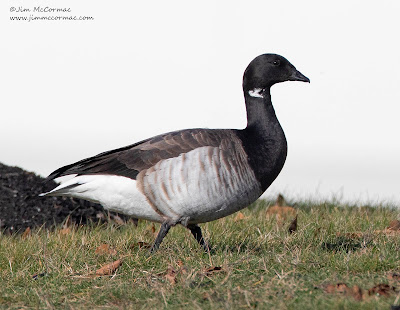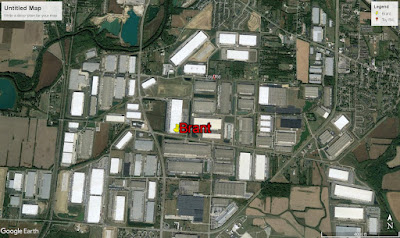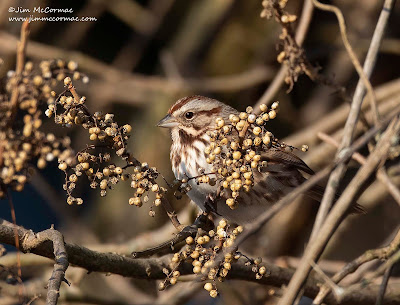I generally know when a "Coop's" is around, even without seeing it. The normally bustling feeders and hedges are quiet as a library. I find it amusing that when a comparatively clumsy and lumbering Red-shouldered Hawk (Buteo lineatus) enters the yard, not much changes regarding songbird behavior. They know the big raptor has little chance of capturing them. Chickadees will dart right by its head going to and fro from feeders, and the same general activity level continues.
Not so with a bird hawk like a Cooper's Hawk. This animal is an extreme threat and the small birds know it. As soon as one is detected, the little fellows instantly vanish into thick cover, or if caught out, freeze still as a stone. I have watched chickadees, nuthatches and others sit without moving a muscle for five minutes or more. Such behavior is sometimes termed "sleeking" and as Accipiter hawks seem to key in on movement, sleeking presumably helps them avoid detection.
This Cooper's Hawk remained in the yard for about 45 minutes. Mostly it sat still for extended periods, waiting and watching. At one point it burst into flight and dove into the neighbor's dense arbor-vitae tree, where a score of House Sparrows (Passer domesticus) huddled. It emerged empty-taloned. In my opinion, the House Sparrow is the smartest species of songbird in the yard, and they're very hard for the hawks to catch. After a bit, the hawk left for greener pastures and within a few minutes everyone was emerging from their shrubby trenches and activity was soon back to normal. But this scenario will soon be repeated. The raptors are daily visitors. No one should be bothered by indirectly feeding hawks by providing seed to lure songbirds. Nature is shot through with all manner of predator-prey relationships, although not too many are as conspicuous as a Cooper's Hawk whacking a cardinal outside your back window.
PHOTO NOTES: I generally always have a telephoto lens handy in the house, for situations such as this. I usually try and quietly open an appropriate window, so I don't have to shoot through additional glass (never shoot through unnecessary glass. Including filters, at least most of the time). When this Cooper's Hawk eventually flew to a nearby fence, he gave me opportunities for portraiture type shots. And the shot that I wanted was pretty much just what I ended up with: the bird glaring directly at me, so that the portrait would show what an unlucky songbird might see in its last moments. It was just a matter of waiting for the bird to adopt that posture, and I was ready when he did.
This image was shot with the Canon 5D IV and 800mm f/5.6mm lens, handheld but balanced on the back of a chair. Knowing that this was the priority head angle I was waiting for, I was stopped down to f/13 to give more depth of field throughout the face and eyes. Shutter speed was a low 1/250, but it was a poorly lit day and that was an effort to help keep the ISO lower. Nonetheless, the latter was 1600 with +0.3 EV dialed in. A bit high for my tastes but when light is poor higher ISO's are a reality. And I don't like shooting that heavy huge rig at slower shutter speeds than what I used, at least without a tripod.




















